Audio/video entertainment devices with Linux inside
Oct 5, 2000 — by Rick Lehrbaum — from the LinuxDevices Archive — 451 views  Blockbuster 2Wire MediaPoint — Nov. 26, 2008 — This Blockbuster-branded IP set-top box and media player is built by 2Wire, and runs Linux on a MIPS-based Broadcom chipset. The Blockbuster 2Wire MediaPoint digital media player is used to download videos from Blockbuster OnDemand via broadband connections.
Blockbuster 2Wire MediaPoint — Nov. 26, 2008 — This Blockbuster-branded IP set-top box and media player is built by 2Wire, and runs Linux on a MIPS-based Broadcom chipset. The Blockbuster 2Wire MediaPoint digital media player is used to download videos from Blockbuster OnDemand via broadband connections.
 CaptiveWorks CW-4000HD Linux Media Center — Nov. 25, 2008 — The CaptiveWorks CW-4000HD Linux Media Center is an IP set-top box (STB) and digital video broadcast receiver that offers FTA satellite HD video reception, as well as media center features. The CW-4000HD is based on Gentoo Linux and other open source projects.
CaptiveWorks CW-4000HD Linux Media Center — Nov. 25, 2008 — The CaptiveWorks CW-4000HD Linux Media Center is an IP set-top box (STB) and digital video broadcast receiver that offers FTA satellite HD video reception, as well as media center features. The CW-4000HD is based on Gentoo Linux and other open source projects.
 NeuLion IPTV STB — Oct. 23, 2008 — NeuLion's Linux-based IPTV set-top box (STB) complements its IPTV encoding and streaming platform. Based on a Freescale Coldfire CPU and an Analog Devices Blackfin DSP (digital signal processor), the NeuLion IPTV STB provides H.264 decoding at 30fps.
NeuLion IPTV STB — Oct. 23, 2008 — NeuLion's Linux-based IPTV set-top box (STB) complements its IPTV encoding and streaming platform. Based on a Freescale Coldfire CPU and an Analog Devices Blackfin DSP (digital signal processor), the NeuLion IPTV STB provides H.264 decoding at 30fps.
 Envisions EVO Smart Console — Oct. 17, 2008 — Envizions's “open source hybrid Linux gaming system” comes with its own “Mirrors Evolution” distro aimed at game developers. The EVO Smart Console is based on a 2.9GHz, 64-bit Athlon, and offers game-play, Internet access, VoIP, and HD video playback.
Envisions EVO Smart Console — Oct. 17, 2008 — Envizions's “open source hybrid Linux gaming system” comes with its own “Mirrors Evolution” distro aimed at game developers. The EVO Smart Console is based on a 2.9GHz, 64-bit Athlon, and offers game-play, Internet access, VoIP, and HD video playback.
 KDDI Au Box — Sep. 25, 2008 — KDDI's Linux-based IP set-top box (STB) converts and transmits TV and Web content to the Japanese carrier's cell phones. Based on Motorola's VIP1830 hardware platform, the “Au Box” also plays back music stored on the phones, and offers CD ripping.
KDDI Au Box — Sep. 25, 2008 — KDDI's Linux-based IP set-top box (STB) converts and transmits TV and Web content to the Japanese carrier's cell phones. Based on Motorola's VIP1830 hardware platform, the “Au Box” also plays back music stored on the phones, and offers CD ripping.
 Yamaha Disklavier Mark IV — Sep. 24, 2008 — Yamaha has added embedded Linux to the electronic “player piano” add-on it offers with some models of its Disklavier Mark IV. With version 3.0 of the Mark IV firmware, MontaVista Linux controls the 333MHz AMD Geode-based piano, enabling new interface possibilities, acoustic recording, and interaction with Web-based services.
Yamaha Disklavier Mark IV — Sep. 24, 2008 — Yamaha has added embedded Linux to the electronic “player piano” add-on it offers with some models of its Disklavier Mark IV. With version 3.0 of the Mark IV firmware, MontaVista Linux controls the 333MHz AMD Geode-based piano, enabling new interface possibilities, acoustic recording, and interaction with Web-based services.
 Sanyan NDVR — Sep. 24, 2008 — Sanyan Computer's Linux-based “NDVR” (networked digital video recorder) is aimed at distributed industrial applications. The NDVR comprises a decoding box and a single- or quad-channel encoder that includes an AMD Geode processor and an MPEG4 coprocessor.
Sanyan NDVR — Sep. 24, 2008 — Sanyan Computer's Linux-based “NDVR” (networked digital video recorder) is aimed at distributed industrial applications. The NDVR comprises a decoding box and a single- or quad-channel encoder that includes an AMD Geode processor and an MPEG4 coprocessor.
 Neuros OSD 2.0 — Sep. 16, 2008 — The second generation, hacker-friendly set-top box (STB) from Neuros Technology runs several open Linux stacks on a tiny TI Davinci-based CPU module delivered with a mini-ITX I/O board and enclosure. The high-definition capable “Open Source Device 2.0” (OSD 2.0) is equipped with a Texas Instruments DaVinci 6446 chipset, offers 256MB each of RAM and NAND flash, and can display video at 720p in MPEG-4, and D1 resolution in the H.264 format.
Neuros OSD 2.0 — Sep. 16, 2008 — The second generation, hacker-friendly set-top box (STB) from Neuros Technology runs several open Linux stacks on a tiny TI Davinci-based CPU module delivered with a mini-ITX I/O board and enclosure. The high-definition capable “Open Source Device 2.0” (OSD 2.0) is equipped with a Texas Instruments DaVinci 6446 chipset, offers 256MB each of RAM and NAND flash, and can display video at 720p in MPEG-4, and D1 resolution in the H.264 format.
 Sony DMX-NV1 Bravia Internet Video Link — Sep. 12, 2008 — This Sony IP set-top box (STB) connects to its Bravia HDTVs, enabling them to display a regularly updated selection of Internet videos. Sony's Linux-based DMX-NV1 Bravia Internet Video Link is equipped with Ethernet, HDMI, and proprietary USB-based DMeX connections.
Sony DMX-NV1 Bravia Internet Video Link — Sep. 12, 2008 — This Sony IP set-top box (STB) connects to its Bravia HDTVs, enabling them to display a regularly updated selection of Internet videos. Sony's Linux-based DMX-NV1 Bravia Internet Video Link is equipped with Ethernet, HDMI, and proprietary USB-based DMeX connections.
 LyngBox Media LyngBox — Sep. 11, 2008 — This Linux-powered set-top box (STB) from Sweden-based LyngBox Media is designed for European satellite TV enthusiasts. The IP-ready LyngBox combines an HDTV receiver/recorder, dual DVB-S2/DVB-T tuners, and a 160GB hard drive, and offers daily updates to LyngSat Network's worldwide satellite programming guide.
LyngBox Media LyngBox — Sep. 11, 2008 — This Linux-powered set-top box (STB) from Sweden-based LyngBox Media is designed for European satellite TV enthusiasts. The IP-ready LyngBox combines an HDTV receiver/recorder, dual DVB-S2/DVB-T tuners, and a 160GB hard drive, and offers daily updates to LyngSat Network's worldwide satellite programming guide.
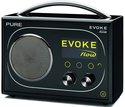 Pure Evoke Flow — Aug. 26, 2008 — Pure's updated version of its Evoke-1S DAB radio runs embedded Linux and provides FM and DAB (Digital Audio Broadcasting) playback. The Evoke Flow Internet radio offers WiFi connectivity and media streaming from a connected PC, and is paired with a Internet search portal called the Pure Lounge.
Pure Evoke Flow — Aug. 26, 2008 — Pure's updated version of its Evoke-1S DAB radio runs embedded Linux and provides FM and DAB (Digital Audio Broadcasting) playback. The Evoke Flow Internet radio offers WiFi connectivity and media streaming from a connected PC, and is paired with a Internet search portal called the Pure Lounge.
 Sonos Digital Music System with ZonePlayer 120 — Aug. 04, 2008 — The latest version of the Sonos Digital Music System supports 802.11n WiFi, and offers a ZonePlayer 120 (ZP120) box that features a smaller new amplifier that delivers five more Watts (55 Watts total) while running cooler than the original ZonePlayer 100's amp. As before, the Sonos system comprises one or more Linux-based, PDA-like Zone Controllers and up to 32 Node players, and now offers a new ampless ZonePlayer 90 in addition to the new ZonePlayer 120.
Sonos Digital Music System with ZonePlayer 120 — Aug. 04, 2008 — The latest version of the Sonos Digital Music System supports 802.11n WiFi, and offers a ZonePlayer 120 (ZP120) box that features a smaller new amplifier that delivers five more Watts (55 Watts total) while running cooler than the original ZonePlayer 100's amp. As before, the Sonos system comprises one or more Linux-based, PDA-like Zone Controllers and up to 32 Node players, and now offers a new ampless ZonePlayer 90 in addition to the new ZonePlayer 120.
 Cirgon Encore — Jul. 11, 2008 — The Cirgon Encore is a Fedora Linux-based media server that supports 1080i HD resolution. The Encore offers 320GB, 500GB, and 750GB hard drive options, and controls management and playback of music, photos, and video for use with an HD-based home theater system.
Cirgon Encore — Jul. 11, 2008 — The Cirgon Encore is a Fedora Linux-based media server that supports 1080i HD resolution. The Encore offers 320GB, 500GB, and 750GB hard drive options, and controls management and playback of music, photos, and video for use with an HD-based home theater system.
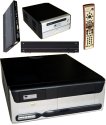 Fiire Fiire System — May 21, 2008 — Fiire's home automation, media control, and security system is based on the open source LinuxMCE distro. Built around a dual-core AMD Athlon X2-based box called the Fiire Engine, the Fiire System also includes FiireStation thin clients and a Z-Wave-based FiireChief controller.
Fiire Fiire System — May 21, 2008 — Fiire's home automation, media control, and security system is based on the open source LinuxMCE distro. Built around a dual-core AMD Athlon X2-based box called the Fiire Engine, the Fiire System also includes FiireStation thin clients and a Z-Wave-based FiireChief controller.
 Roku Netflix Player — May 20, 2008 — The Netflix Player is a $100 set-top box aimed at enabling subscribers to stream Netflix movies on demand, using a broadband Internet connection. The player runs Linux, and is supplied by Roku, a California-based company known for its Linux-based PVRs (personal video recorders).
Roku Netflix Player — May 20, 2008 — The Netflix Player is a $100 set-top box aimed at enabling subscribers to stream Netflix movies on demand, using a broadband Internet connection. The player runs Linux, and is supplied by Roku, a California-based company known for its Linux-based PVRs (personal video recorders).
 Myka TorrentTV — Apr. 02, 2008 — Myka's TorrentTV downloads, stores, and plays BitTorrent media files on an attached TV. TorrentTV offloads BitTorrent peer-to-peer duties from a PC platform, easing the process of displaying “Torrents” on a TV.
Myka TorrentTV — Apr. 02, 2008 — Myka's TorrentTV downloads, stores, and plays BitTorrent media files on an attached TV. TorrentTV offloads BitTorrent peer-to-peer duties from a PC platform, easing the process of displaying “Torrents” on a TV.
 Control4 Home Controller HC-500 — Mar. 27, 2008 — Control4 has added to its line of Linux-based, ZigBee-compatible home automation/media networking products with a new controller. The Control4 Home Controller HC-500 interfaces with home theater appliances, multi-room music access, lighting, thermostats, and security systems, and comes with a Linux software development kit (SDK).
Control4 Home Controller HC-500 — Mar. 27, 2008 — Control4 has added to its line of Linux-based, ZigBee-compatible home automation/media networking products with a new controller. The Control4 Home Controller HC-500 interfaces with home theater appliances, multi-room music access, lighting, thermostats, and security systems, and comes with a Linux software development kit (SDK).
 Slim Devices SqueezeBox Duet — Feb. 06, 2008 — Logitech subsidiary Slim Devices has announced a major upgrade to its digital music distribution system. The SqueezeBox Duet includes a Linux-based WiFi-connected handheld device able to control the streaming of network-based music to one or more digital media adapters, and available with open source development tools.
Slim Devices SqueezeBox Duet — Feb. 06, 2008 — Logitech subsidiary Slim Devices has announced a major upgrade to its digital music distribution system. The SqueezeBox Duet includes a Linux-based WiFi-connected handheld device able to control the streaming of network-based music to one or more digital media adapters, and available with open source development tools.
 AHT Tribbox — Jan. 24, 2008 — Developed by Dutch start-up AHT (Advanced Home Technologies), this Linux-based device is designed for open source developers who wish to write applications for set-top boxes (STBs) based on STMicroelectronics' ST7109 SoC for HDTVs. The Tribbox development platform supports DVR, IP-telephony, and H.264 digital TV functions.
AHT Tribbox — Jan. 24, 2008 — Developed by Dutch start-up AHT (Advanced Home Technologies), this Linux-based device is designed for open source developers who wish to write applications for set-top boxes (STBs) based on STMicroelectronics' ST7109 SoC for HDTVs. The Tribbox development platform supports DVR, IP-telephony, and H.264 digital TV functions.
 Com One Phoenix WiFi Radio — Jan. 09, 2008 — The Linux-based Phoenix WiFi Radio from French bluetooth accessory specialist Com One offers upgraded firmware. The Internet-enabled clock-radio is equipped with an Intel PXA270 (Bulverde) processor clocked to 300MHz, comes with 32MB of RAM, and boots Linux 2.6.15-7 from 8MB of Flash.
Com One Phoenix WiFi Radio — Jan. 09, 2008 — The Linux-based Phoenix WiFi Radio from French bluetooth accessory specialist Com One offers upgraded firmware. The Internet-enabled clock-radio is equipped with an Intel PXA270 (Bulverde) processor clocked to 300MHz, comes with 32MB of RAM, and boots Linux 2.6.15-7 from 8MB of Flash.
 BridgeCo JukeBlox — Jan. 08, 2008 — The third generation of BridgeCo's digital media player (DMP) hardware-software reference design has switched to Linux. The JukeBlox design uses custom ARM9 SoC, and is designed for stereo and home-theater receivers, table radios, iPod docks, and other audio devices.
BridgeCo JukeBlox — Jan. 08, 2008 — The third generation of BridgeCo's digital media player (DMP) hardware-software reference design has switched to Linux. The JukeBlox design uses custom ARM9 SoC, and is designed for stereo and home-theater receivers, table radios, iPod docks, and other audio devices.
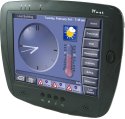 Convergent Living Companion Muse — Dec. 07, 2007 — Convergent Living's WiFi-capable automation controller is aimed at letting users program HVAC and multimedia equipment in homes or offices. The handheld Companion Muse is one of several energy-efficient, Linux-based touchscreen controllers from Convergent, whose products range from kitchen computers to flatscreen TVs.
Convergent Living Companion Muse — Dec. 07, 2007 — Convergent Living's WiFi-capable automation controller is aimed at letting users program HVAC and multimedia equipment in homes or offices. The handheld Companion Muse is one of several energy-efficient, Linux-based touchscreen controllers from Convergent, whose products range from kitchen computers to flatscreen TVs.
 Numark iDJ2 — Oct. 26, 2007 — The Numark iDJ2 is a Linux-based DJ mixing console built around the Apple iPod. The iDJ2 allows users to play two songs simultaneously from a single iPod, and offers music control with real-time scratching, pitch control, seamless loop, and full cueing.
Numark iDJ2 — Oct. 26, 2007 — The Numark iDJ2 is a Linux-based DJ mixing console built around the Apple iPod. The iDJ2 allows users to play two songs simultaneously from a single iPod, and offers music control with real-time scratching, pitch control, seamless loop, and full cueing.
 Monsoon Hava — Sep. 20, 2007 — Monsoon Multimedia's Hava is a consumer DVR (digital video recorder) with remote multimedia file serving capabilities. The Hava, which was implicated in a GPL violation court case (Monsoon settled out of court), enables access to live and recorded TV content from broadband connections.
Monsoon Hava — Sep. 20, 2007 — Monsoon Multimedia's Hava is a consumer DVR (digital video recorder) with remote multimedia file serving capabilities. The Hava, which was implicated in a GPL violation court case (Monsoon settled out of court), enables access to live and recorded TV content from broadband connections.
 Sonos Digital Music System — Aug. 15, 2007 — Sonos's Digital Music System comprises one or more Linux-based, PDA-like Zone Controllers (pictured), together with up to 32 Node players. The Sirius radio-enabled Node players can be bought with Tripath-based digital amplifiers, connected via wired or wireless mesh-network connections.
Sonos Digital Music System — Aug. 15, 2007 — Sonos's Digital Music System comprises one or more Linux-based, PDA-like Zone Controllers (pictured), together with up to 32 Node players. The Sirius radio-enabled Node players can be bought with Tripath-based digital amplifiers, connected via wired or wireless mesh-network connections.
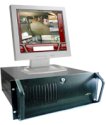 Neugent LX8000 SmartDetect DVR — Jul. 02, 2007 — Phillipines-based Neugent Technologies's line of Linux-based surveillance DVRs (digital video recorders) is based on its video capture cards. The LX8000 SmartDetect DVR offers “built-in object detection video analytics,” enabling users to keep tabs on abandoned, missing, or stolen objects.
Neugent LX8000 SmartDetect DVR — Jul. 02, 2007 — Phillipines-based Neugent Technologies's line of Linux-based surveillance DVRs (digital video recorders) is based on its video capture cards. The LX8000 SmartDetect DVR offers “built-in object detection video analytics,” enabling users to keep tabs on abandoned, missing, or stolen objects.
 Moxa VPort 351 — May 11, 2007 — Moxa's single-channel full-motion MPEG-4/MJPEG industrial video encoder peripheral works with distributed surveillance systems. The VPort 351 can provide full D1-resolution video at 30fps, and features 2-way audio and event trigger functions.
Moxa VPort 351 — May 11, 2007 — Moxa's single-channel full-motion MPEG-4/MJPEG industrial video encoder peripheral works with distributed surveillance systems. The VPort 351 can provide full D1-resolution video at 30fps, and features 2-way audio and event trigger functions.
 Tilgin Mood 400 — May 10, 2007 — This Tilgin TV set-top box now includes an Opera 9 for Devices web browser. Based on a STMicroelectronics STB7109 processor clocked at 266MHz, plus two 400MHz ASICs, the DVR-enabled Mood 400 features an HDMI interface and MPEG-2 and MPEG-4 decoding at resolutions up to 1080i.
Tilgin Mood 400 — May 10, 2007 — This Tilgin TV set-top box now includes an Opera 9 for Devices web browser. Based on a STMicroelectronics STB7109 processor clocked at 266MHz, plus two 400MHz ASICs, the DVR-enabled Mood 400 features an HDMI interface and MPEG-2 and MPEG-4 decoding at resolutions up to 1080i.
 Motorola VIP1510 — Apr. 09, 2007 — The Motorola VIP1510 is an Internet Protocol set-top box (IP-STB) that runs Linux on a MIPS-based processor with hardware MPEG-2 acceleration. Motorola claims to have sold over a million IP-STBs, 80 percent of which are said to run Linux.
Motorola VIP1510 — Apr. 09, 2007 — The Motorola VIP1510 is an Internet Protocol set-top box (IP-STB) that runs Linux on a MIPS-based processor with hardware MPEG-2 acceleration. Motorola claims to have sold over a million IP-STBs, 80 percent of which are said to run Linux.
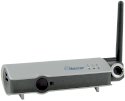 SysMaster Tornado M10 Digital Media Center — Apr. 06, 2007 — The SysMaster Tornado M10 Digital Media Center IP-STB offers MPEG-4 video-on-demand and Internet radio playback. Additional Tornado features include LAN-based H.26e videoconferencing (without any gateway), support for standard FXO phone lines, and Ethernet-based VoIP calling.
SysMaster Tornado M10 Digital Media Center — Apr. 06, 2007 — The SysMaster Tornado M10 Digital Media Center IP-STB offers MPEG-4 video-on-demand and Internet radio playback. Additional Tornado features include LAN-based H.26e videoconferencing (without any gateway), support for standard FXO phone lines, and Ethernet-based VoIP calling.
 Muse Research Receptor — Mar. 20, 2007 — Muse Research's virtual instrumentation and effects box is said to be used by the Rolling Stones, U2, Herbie Hancock, John Mayer, and others. The 2U rackmounted “Receptor” runs VST-format audio effects and virtual instruments on a commodity PC equipped with a MD Turion 64-bit processor clocked at 2.2GHz, 1MB of L2 cache, 2GB RAM, and up to a 750GB hard drive.
Muse Research Receptor — Mar. 20, 2007 — Muse Research's virtual instrumentation and effects box is said to be used by the Rolling Stones, U2, Herbie Hancock, John Mayer, and others. The 2U rackmounted “Receptor” runs VST-format audio effects and virtual instruments on a commodity PC equipped with a MD Turion 64-bit processor clocked at 2.2GHz, 1MB of L2 cache, 2GB RAM, and up to a 750GB hard drive.
 Celrun 900H — Mar. 12, 2007 — Celrun's latest IP set-top box (STB) supports WiMedia Ultra-wideband (UWB) networking. The Celrun 900H is equipped with Sigma's 300MHz SMP8634 media processor, as well as a “Windeo” UWB chipset, and supports video formats including H.264, WMV9/VC1, and MPEG-2.
Celrun 900H — Mar. 12, 2007 — Celrun's latest IP set-top box (STB) supports WiMedia Ultra-wideband (UWB) networking. The Celrun 900H is equipped with Sigma's 300MHz SMP8634 media processor, as well as a “Windeo” UWB chipset, and supports video formats including H.264, WMV9/VC1, and MPEG-2.
 Digeo Moxi — Jan. 11, 2007 — The Paul Allen-backed Digeo offers the Linux-based Moxi DVR (digital video recorder). Moxi is equipped with a CableCARD slot, a 5.1-channel A/V amplifier, a DVD/CD drive, an OTA (over-the-air) ATSC broadcast tuner, and an “in-the-clear” QAM digital cable tuner.
Digeo Moxi — Jan. 11, 2007 — The Paul Allen-backed Digeo offers the Linux-based Moxi DVR (digital video recorder). Moxi is equipped with a CableCARD slot, a 5.1-channel A/V amplifier, a DVD/CD drive, an OTA (over-the-air) ATSC broadcast tuner, and an “in-the-clear” QAM digital cable tuner.
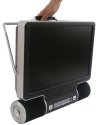 Quataris Ottimo — Dec. 1, 2006 — An all-in-one Pentium 4 based analog TV/PC, the new Ottimo model features an innovative mechanical design, supports processors up to 2.8GHz, comes with 15-, 17-, or 19-inch screens, and is available pre-installed with SUSE Linux.
Quataris Ottimo — Dec. 1, 2006 — An all-in-one Pentium 4 based analog TV/PC, the new Ottimo model features an innovative mechanical design, supports processors up to 2.8GHz, comes with 15-, 17-, or 19-inch screens, and is available pre-installed with SUSE Linux.
 Siemens Switzerland STB-7100 — Nov. 1, 2006 — Comprised of three hardware/software reference designs, the STB-7100-series run Linux 2.6 on a SuperH-based processor, and support standard- and high-definition content, along with multiple access technologies, including DSL, cable, and DVB-T (digital video broadcastterrestrial).
Siemens Switzerland STB-7100 — Nov. 1, 2006 — Comprised of three hardware/software reference designs, the STB-7100-series run Linux 2.6 on a SuperH-based processor, and support standard- and high-definition content, along with multiple access technologies, including DSL, cable, and DVB-T (digital video broadcastterrestrial).
 Infrant Repertoire — Oct. 1, 2006 — A Linux-based storage device designed specially for serving up digital media files, including videos and music files, the Repertoire has no playback capabilities, but can store up to 3TB of media, and stream or transfer it using most common, standard, open protocols.
Infrant Repertoire — Oct. 1, 2006 — A Linux-based storage device designed specially for serving up digital media files, including videos and music files, the Repertoire has no playback capabilities, but can store up to 3TB of media, and stream or transfer it using most common, standard, open protocols.
 Russound SMS3 home media server — Oct. 1, 2006 — Whole-house stereo specialist Russound's first media server stores and plays music files directly, rather than streaming them over a network. It runs Linux, and can tune in Internet radio stations, and can store photos and display them on TVs via S-video or component video.
Russound SMS3 home media server — Oct. 1, 2006 — Whole-house stereo specialist Russound's first media server stores and plays music files directly, rather than streaming them over a network. It runs Linux, and can tune in Internet radio stations, and can store photos and display them on TVs via S-video or component video.
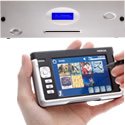 Pinnacle Audio Athenaeum — Oct. 1, 2006 — An ultra-high-fidelity, hard-drive-based music server capable of storing roughly 9,000 CDs, with lossless compression, the ultra high-end Linux-powered Athenaeum from UK-based Pinnacle Audio comes with a Linux-powered Nokia 770 Internet Tablet as its remote control.
Pinnacle Audio Athenaeum — Oct. 1, 2006 — An ultra-high-fidelity, hard-drive-based music server capable of storing roughly 9,000 CDs, with lossless compression, the ultra high-end Linux-powered Athenaeum from UK-based Pinnacle Audio comes with a Linux-powered Nokia 770 Internet Tablet as its remote control.
 Monster Einstein — Oct. 1, 2006 — A Linux-based home multimedia distribution system, Monster's ultra-high-end, Linux-based “Einstein” system is expected to ship in March of 2007.
Monster Einstein — Oct. 1, 2006 — A Linux-based home multimedia distribution system, Monster's ultra-high-end, Linux-based “Einstein” system is expected to ship in March of 2007.
 Technetix AccessKey Home STB — Oct. 1, 2006 — An IP-STB (Internet protocol set-top box) with a USB-based “cable card” that allows users to access subscription content from Internet-connected PCs, the “AccessKey Home” IP-STB from publicly traded startup Advanced Technetix runs Linux or Windows, and targets IP-TV service providers.
Technetix AccessKey Home STB — Oct. 1, 2006 — An IP-STB (Internet protocol set-top box) with a USB-based “cable card” that allows users to access subscription content from Internet-connected PCs, the “AccessKey Home” IP-STB from publicly traded startup Advanced Technetix runs Linux or Windows, and targets IP-TV service providers.
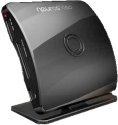 Neuros OSD (Open Source Device) — Sep. 1, 2006 — A next-gen DVR (digital video recorder) specially for mobile devices, the Linux-powered OSD can record MPEG-4 video from cable or broadcast TV, DVDs, etc., and transfer it to portable media players.
Neuros OSD (Open Source Device) — Sep. 1, 2006 — A next-gen DVR (digital video recorder) specially for mobile devices, the Linux-powered OSD can record MPEG-4 video from cable or broadcast TV, DVDs, etc., and transfer it to portable media players.
 Softier Wave 400 — Sep. 1, 2006 — The Wave-400 runs Linux on a Texas Instruments (TI) Davinci RISC/DSP chip, and can be customized using Javascript and other web technologies.
Softier Wave 400 — Sep. 1, 2006 — The Wave-400 runs Linux on a Texas Instruments (TI) Davinci RISC/DSP chip, and can be customized using Javascript and other web technologies.
 Archos 604 and 604 WiFi — Sep. 1, 2006 — The Archos 604 WiFi features an Opera browser, 30GB hard drive, and a “media station” add-on that allows recording from video sources such as TVs and set-top boxes.
Archos 604 and 604 WiFi — Sep. 1, 2006 — The Archos 604 WiFi features an Opera browser, 30GB hard drive, and a “media station” add-on that allows recording from video sources such as TVs and set-top boxes.
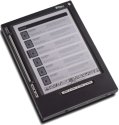 iRex Iliad eBook Reader — Aug. 1, 2006 — An electronic paper display (EPD) helps save power in this portable, Linux-based reading device, available now for personal and business-to-business applications. The iLiad's paper display “reads just like paper, and is perceived as such by the human eye,” according to the company.
iRex Iliad eBook Reader — Aug. 1, 2006 — An electronic paper display (EPD) helps save power in this portable, Linux-based reading device, available now for personal and business-to-business applications. The iLiad's paper display “reads just like paper, and is perceived as such by the human eye,” according to the company.
 Lix Systems LX8100MN barebones HTPC — Aug. 1, 2006 — A low-cost Linux powered home theater PC (HTPC) packaged in a compact, consumer electronics-style enclosure, the Lx8100-MN, available “barebones” (sans CPU, memory, and hard drive) for around $300, offers quiet operation and is supplied with an easily-installed Fedora 5-based system image on DVD.
Lix Systems LX8100MN barebones HTPC — Aug. 1, 2006 — A low-cost Linux powered home theater PC (HTPC) packaged in a compact, consumer electronics-style enclosure, the Lx8100-MN, available “barebones” (sans CPU, memory, and hard drive) for around $300, offers quiet operation and is supplied with an easily-installed Fedora 5-based system image on DVD.
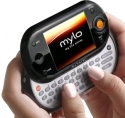 Sony Mylo (“my life online”) — Aug. 1, 2006 — A Linux- and Qtopia-based handheld device featuring WiFi connectivity, an Opera web browser, a thumb keyboard, QVGA display (320 x 240), and a variety of text- and voice-messaging clients and media players.
Sony Mylo (“my life online”) — Aug. 1, 2006 — A Linux- and Qtopia-based handheld device featuring WiFi connectivity, an Opera web browser, a thumb keyboard, QVGA display (320 x 240), and a variety of text- and voice-messaging clients and media players.
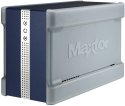 Seagate Maxtor Shared Storage II — Jul. 1, 2006 — A network-attached storage device claimed capable of providing data security to homes or small offices, the Maxtor Shared Storage II is a dual-drive appliance with gigabit Ethernet, two USB ports, a capacity of 1,000GB, and DLNA-compliant media server software from Mediabolic.
Seagate Maxtor Shared Storage II — Jul. 1, 2006 — A network-attached storage device claimed capable of providing data security to homes or small offices, the Maxtor Shared Storage II is a dual-drive appliance with gigabit Ethernet, two USB ports, a capacity of 1,000GB, and DLNA-compliant media server software from Mediabolic.
 Trinity Audio Group Digital Audio Workstation — Jul. 1, 2006 — A small, portable, inexpensive digital audio workstation (DAW) claimed capable of professional-quality recording and mixing, the Trinity DAW is based on an Intel PXA270 processor, and targets field recordists, podcasters, and producers.
Trinity Audio Group Digital Audio Workstation — Jul. 1, 2006 — A small, portable, inexpensive digital audio workstation (DAW) claimed capable of professional-quality recording and mixing, the Trinity DAW is based on an Intel PXA270 processor, and targets field recordists, podcasters, and producers.
 ZZvcom VC 9000 and NDVD 9000 set-top boxes — Jun. 1, 2006 — A line of extremely inexpensive Linux-based set-top boxes that will be marketed directly to individuals in rural areas of China, the ZZvcom VC and NDVD boxes aim to enable the Chinese government to deliver remote education programs to citizens who may not otherwise have access to education.
ZZvcom VC 9000 and NDVD 9000 set-top boxes — Jun. 1, 2006 — A line of extremely inexpensive Linux-based set-top boxes that will be marketed directly to individuals in rural areas of China, the ZZvcom VC and NDVD boxes aim to enable the Chinese government to deliver remote education programs to citizens who may not otherwise have access to education.
 Titan Global Entertainment Omni PMP — Jun. 1, 2006 — A “hybrid” music entertainment company with several revenue models says it is shipping its first portable media player (PMP). Titan Global Entertainment's “Omni” PMP runs Linux, has a 4.3-inch QVGA display, and offers standard media recording and playback features, according to the company.
Titan Global Entertainment Omni PMP — Jun. 1, 2006 — A “hybrid” music entertainment company with several revenue models says it is shipping its first portable media player (PMP). Titan Global Entertainment's “Omni” PMP runs Linux, has a 4.3-inch QVGA display, and offers standard media recording and playback features, according to the company.
 Visioneering Sonata STBs — Jun. 1, 2006 — A line of set-top boxes targeting standard- or high-definition IP-TV (internet protocol TV) systems, the Sonata STBs run Linux on Texas Instruments (TI) “DaVinci” processors, with custom “real-time image enhancement” ASICs (application-specific integrated circuits) said to offer unmatched video quality over broadband networks.
Visioneering Sonata STBs — Jun. 1, 2006 — A line of set-top boxes targeting standard- or high-definition IP-TV (internet protocol TV) systems, the Sonata STBs run Linux on Texas Instruments (TI) “DaVinci” processors, with custom “real-time image enhancement” ASICs (application-specific integrated circuits) said to offer unmatched video quality over broadband networks.
 Media Systems iSetBox Home — May. 1, 2006 — A triangle-shaped set-top box (STB) that runs Linux, the Media Systems iSetBox-Home is powered by a Pixelworks processor, and lets users watch TV and DVD movies, listen to music, and more.
Media Systems iSetBox Home — May. 1, 2006 — A triangle-shaped set-top box (STB) that runs Linux, the Media Systems iSetBox-Home is powered by a Pixelworks processor, and lets users watch TV and DVD movies, listen to music, and more.
 Glyph GPM-216 — Apr. 1, 2006 — A personal monitoring system aimed at letting musicians create their own monitor mixes from local and networked audio sources, the GPM-216 runs a real-time Slackware implementation, and uses Jack, Alsa, and LADSPA software.
Glyph GPM-216 — Apr. 1, 2006 — A personal monitoring system aimed at letting musicians create their own monitor mixes from local and networked audio sources, the GPM-216 runs a real-time Slackware implementation, and uses Jack, Alsa, and LADSPA software.
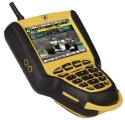 Kangaroo TV — Apr. 1, 2006 — A rugged, cellular-networked multimedia transceiver that lets spectators at live sporting events tailor their own broadcast coverage, selecting from up to 10 live video feeds, calling up instant replays on demand, and accessing statistics and score-cards in real-time.
Kangaroo TV — Apr. 1, 2006 — A rugged, cellular-networked multimedia transceiver that lets spectators at live sporting events tailor their own broadcast coverage, selecting from up to 10 live video feeds, calling up instant replays on demand, and accessing statistics and score-cards in real-time.
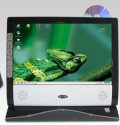 Quataris QuaNext PC — Apr. 1, 2006 — A flat-panel PC/TV that runs a multimedia OS based on SUSE Linux, the QuaNext PC is based on a Pentium 4, and has a built-in, widescreen 19-inch LCD flat-panel display, along with a PAL-format (European) TV receiver.
Quataris QuaNext PC — Apr. 1, 2006 — A flat-panel PC/TV that runs a multimedia OS based on SUSE Linux, the QuaNext PC is based on a Pentium 4, and has a built-in, widescreen 19-inch LCD flat-panel display, along with a PAL-format (European) TV receiver.
 Cowon A2 PMP — Mar. 1, 2006 — The A2 features a 1.8-inch, 20GB or 30GB hard drive, a 4-inch wide-aspect LCD, and a large 4300mAh battery for impressive claimed media playback times.
Cowon A2 PMP — Mar. 1, 2006 — The A2 features a 1.8-inch, 20GB or 30GB hard drive, a 4-inch wide-aspect LCD, and a large 4300mAh battery for impressive claimed media playback times.
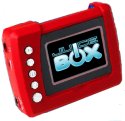 Mattel Juicebox — Feb. 15, 2006 — Tim Riker's eLinux.org website has published extensive, detailed instructions for creating a cartridge that can boot any unmodified Mattel JuiceBox into a Linux-based environment.
Mattel Juicebox — Feb. 15, 2006 — Tim Riker's eLinux.org website has published extensive, detailed instructions for creating a cartridge that can boot any unmodified Mattel JuiceBox into a Linux-based environment.
 Motorola/Kreatel IP-STBs — Jan. 20, 2006 — Motorola has agreed to acquire a Swedish provider of Linux-based IPTV STBs (Internet protocol TV set-top boxes. Kreatel Communications supplies STBs to service providers throughout Europe, and will be integrated into Motorola's Connected Home Solutions business. Kreatel currently offers six Linux-based STB models.
Motorola/Kreatel IP-STBs — Jan. 20, 2006 — Motorola has agreed to acquire a Swedish provider of Linux-based IPTV STBs (Internet protocol TV set-top boxes. Kreatel Communications supplies STBs to service providers throughout Europe, and will be integrated into Motorola's Connected Home Solutions business. Kreatel currently offers six Linux-based STB models.
 Neuros Audio Recorder III — Jan. 20, 2006 — The Linux-based Recorder III will have a new hardware design, and is expected to ship as soon as Q3, 2006. The device's hardware design will be repurposed in a Neuros III “Digital Audio Computer” (DAC) music server product, also to be based on open source software, and expected in 2007.
Neuros Audio Recorder III — Jan. 20, 2006 — The Linux-based Recorder III will have a new hardware design, and is expected to ship as soon as Q3, 2006. The device's hardware design will be repurposed in a Neuros III “Digital Audio Computer” (DAC) music server product, also to be based on open source software, and expected in 2007.
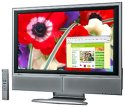 Sharp IT-32X2 LCD HDTV — Jan. 12, 2006 — A 32-inch flat-panel TV/PC display with a built-in 802.11a/b/g wireless media adapter, the IT-32X2 has a built-in HDTV tuner, and USB ports for viewing photos from digital cameras or USB storage devices. It is based on Linux and a WiFi stack from Devicescape.
Sharp IT-32X2 LCD HDTV — Jan. 12, 2006 — A 32-inch flat-panel TV/PC display with a built-in 802.11a/b/g wireless media adapter, the IT-32X2 has a built-in HDTV tuner, and USB ports for viewing photos from digital cameras or USB storage devices. It is based on Linux and a WiFi stack from Devicescape.
 Sonos ZP80 — Jan. 4, 2006 — A version of Sonos's Linux-based multi-room music distribution system without a built-in amplifier, the ZonePlayer ZP80 allows users to integrate existing audiophile equipment with the Sonos Digital Music System.
Sonos ZP80 — Jan. 4, 2006 — A version of Sonos's Linux-based multi-room music distribution system without a built-in amplifier, the ZonePlayer ZP80 allows users to integrate existing audiophile equipment with the Sonos Digital Music System.
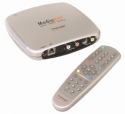 Hauppage Media MediaMVP “G” — Jan. 3, 2006 — A wireless-G enabled version of the MediaMVP (music, video, pictures), the MediaMVP G is a wireless set-top decoder for 802.11G (54Mbps) networks that allows Windows PC users to display digital multimedia content on TVs, stereos, home theaters, and the like.
Hauppage Media MediaMVP “G” — Jan. 3, 2006 — A wireless-G enabled version of the MediaMVP (music, video, pictures), the MediaMVP G is a wireless set-top decoder for 802.11G (54Mbps) networks that allows Windows PC users to display digital multimedia content on TVs, stereos, home theaters, and the like.
 IUbi PMP2010 — Dec. 12, 2005 — A portable media player (PMP) with an optional broadcast TV receiver. The IUbi PMP2010 has a 4.3-inch screen, a 40GB or 100GB hard drive, and is priced around 400,000 Korean won (about $400).
IUbi PMP2010 — Dec. 12, 2005 — A portable media player (PMP) with an optional broadcast TV receiver. The IUbi PMP2010 has a 4.3-inch screen, a 40GB or 100GB hard drive, and is priced around 400,000 Korean won (about $400).
 Buffalo TeraServer — Dec. 10, 2005 — A “Home Server” (HS) version of Buffalo's NAS server, the TeraServer includes multimedia file management and serving software developed using a Linux SDK from tools and middleware vendor Mediabolic.
Buffalo TeraServer — Dec. 10, 2005 — A “Home Server” (HS) version of Buffalo's NAS server, the TeraServer includes multimedia file management and serving software developed using a Linux SDK from tools and middleware vendor Mediabolic.
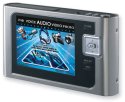 Neuros Audio 442 — Dec. 5, 2005 — A Linux-based portable media player (PMP) expected to reach market early next year. The Neuros Audio 442 PMP currently ships with a proprietary RTOS, but will be switched in early 2006 to a Linux firmware release.
Neuros Audio 442 — Dec. 5, 2005 — A Linux-based portable media player (PMP) expected to reach market early next year. The Neuros Audio 442 PMP currently ships with a proprietary RTOS, but will be switched in early 2006 to a Linux firmware release.
 MacPower TVisto — Nov. 25, 2005 — A small, inexpensive uClinux-based multimedia server that adds a hard drive-equipped multimedia jukebox to TVs and other displays, the MacPower TVisto Series 3.5 houses a 3.5-inch hard drive, and features an infrared remote control. It supports a wide variety of media files.
MacPower TVisto — Nov. 25, 2005 — A small, inexpensive uClinux-based multimedia server that adds a hard drive-equipped multimedia jukebox to TVs and other displays, the MacPower TVisto Series 3.5 houses a 3.5-inch hard drive, and features an infrared remote control. It supports a wide variety of media files.
 Pontis PMP2020 — Nov. 11, 2005 — A $200 Linux-based PMP (portable media player) with a 3.5-inch TFT display and 20GB hard drive, the Pontis MX2020 is “the most affordable hard-disk based big-screen PMP on the market today,” according to reviewer Eugenia Loli-Queru.
Pontis PMP2020 — Nov. 11, 2005 — A $200 Linux-based PMP (portable media player) with a 3.5-inch TFT display and 20GB hard drive, the Pontis MX2020 is “the most affordable hard-disk based big-screen PMP on the market today,” according to reviewer Eugenia Loli-Queru.
 Gamepark Holdings GP2X — Oct. 20, 2005 — An inexpensive handheld Linux gaming device with dual ARM9 processors, USB 2.0, a 3.5-inch color LCD, support for both native and emulated games, and a Linux SDK (software development kit).
Gamepark Holdings GP2X — Oct. 20, 2005 — An inexpensive handheld Linux gaming device with dual ARM9 processors, USB 2.0, a 3.5-inch color LCD, support for both native and emulated games, and a Linux SDK (software development kit).
 Acoustic Energy WiFi Internet Radio — Aug. 28, 2005 — A wireless Internet table radio based on embedded Linux, the prosaicly code-named “Wi-Fi internet radio” will support “all three major streaming formats,” and tune in a claimed 99 percent of online radio stations, the company says.
Acoustic Energy WiFi Internet Radio — Aug. 28, 2005 — A wireless Internet table radio based on embedded Linux, the prosaicly code-named “Wi-Fi internet radio” will support “all three major streaming formats,” and tune in a claimed 99 percent of online radio stations, the company says.
 Comtrend CT-702 “triple play” STB — Aug. 1, 2005 — A “triple play” set-top box that delivers broadband TV, video-on-demand (VOD), Internet, and voice-over-IP (VoIP) services.
Comtrend CT-702 “triple play” STB — Aug. 1, 2005 — A “triple play” set-top box that delivers broadband TV, video-on-demand (VOD), Internet, and voice-over-IP (VoIP) services.
 Haier/Freescale UWB media server — Jun. 23, 2005 — Haier Corp. and Freescale Semiconductor have jointly demonstrated a UWB (Ultra-Wideband) high definition (HD) television and digital media server, wirelessly broadcasting HD video and audio streams across a stage. The demonstration occurred at Freescale's annual Technology Forum, and showcased a “critical milestone for wireless home entertainment systems,” according to the companies.
Haier/Freescale UWB media server — Jun. 23, 2005 — Haier Corp. and Freescale Semiconductor have jointly demonstrated a UWB (Ultra-Wideband) high definition (HD) television and digital media server, wirelessly broadcasting HD video and audio streams across a stage. The demonstration occurred at Freescale's annual Technology Forum, and showcased a “critical milestone for wireless home entertainment systems,” according to the companies.
 Apple iPod with Linux firmware — Jun. 23, 2005 — Installing Linux on your iPod lets you record high-quality audio or play games, easily returning to the stock environment to listen to music. iPod Linux is simple to install on all but the newest iPod models, and requires only 5MB of disk space.
Apple iPod with Linux firmware — Jun. 23, 2005 — Installing Linux on your iPod lets you record high-quality audio or play games, easily returning to the stock environment to listen to music. iPod Linux is simple to install on all but the newest iPod models, and requires only 5MB of disk space.
 Sony Playstation 3 — Jun. 13, 2005 — Sony will position its next-generation gaming console as an “entertainment supercomputer” that can edit videos, manipulate photos, and more, thanks to interchangeable hard drives pre-installed with task-based Linux operating systems of various kinds, according to a Gamespot translation of an interview in a Japanese-language technical magazine. The Playstation 3 is expected to ship in Spring of 2006.
Sony Playstation 3 — Jun. 13, 2005 — Sony will position its next-generation gaming console as an “entertainment supercomputer” that can edit videos, manipulate photos, and more, thanks to interchangeable hard drives pre-installed with task-based Linux operating systems of various kinds, according to a Gamespot translation of an interview in a Japanese-language technical magazine. The Playstation 3 is expected to ship in Spring of 2006.
 Digital Techniques Blackbird — Jun. 10, 2005 — A digital home music server with a Web interface supporting small-screen browsers, the Blackbird is based on off-the-shelf mini-ITX parts, and high-end PCI sound cards. Three Blackbird models have 80-300GB hard drives, lots of networking options, and a web interface supporting control from a wireless PDA. Supported file formats include MP3, MP3PRO, Ogg, WAV, and FLAC, and the device comes preloaded with several Internet radio stations.
Digital Techniques Blackbird — Jun. 10, 2005 — A digital home music server with a Web interface supporting small-screen browsers, the Blackbird is based on off-the-shelf mini-ITX parts, and high-end PCI sound cards. Three Blackbird models have 80-300GB hard drives, lots of networking options, and a web interface supporting control from a wireless PDA. Supported file formats include MP3, MP3PRO, Ogg, WAV, and FLAC, and the device comes preloaded with several Internet radio stations.
 Intervideo InstantOn laptops — Jun. 1, 2005 — InterVideo's InstantOn comprises an alternative boot environment for laptops, enabling them to boot quickly into a Linux-based multimedia entertainment appliance. InstantOn supports DVD burning on select notebooks, as well as DVB-T. It is available in laptops from NEC and others, and in barebones PCs from AOpen.
Intervideo InstantOn laptops — Jun. 1, 2005 — InterVideo's InstantOn comprises an alternative boot environment for laptops, enabling them to boot quickly into a Linux-based multimedia entertainment appliance. InstantOn supports DVD burning on select notebooks, as well as DVB-T. It is available in laptops from NEC and others, and in barebones PCs from AOpen.
 Pace Micro Tahoe DVR — Apr. 8, 2005 — An HD DVR (high-definition digital video recorder) based on Linux, the “Tahoe” offers the best features in its class, Pace says, including a built-in cable modem.
Pace Micro Tahoe DVR — Apr. 8, 2005 — An HD DVR (high-definition digital video recorder) based on Linux, the “Tahoe” offers the best features in its class, Pace says, including a built-in cable modem.
.  Siemens m740 — Mar. 24, 2005 — A Linux-based digital STB (set-top box) available in Europe that has attracted a community of Linux hackers, the Siemens Gigaset M740 AV can decode satellite and terrestrial DVBs (digital video broadcasts). It supports PVR functionality through an external USB hard drive.
Siemens m740 — Mar. 24, 2005 — A Linux-based digital STB (set-top box) available in Europe that has attracted a community of Linux hackers, the Siemens Gigaset M740 AV can decode satellite and terrestrial DVBs (digital video broadcasts). It supports PVR functionality through an external USB hard drive.
 D-Link DSM-320 — Mar. 20, 2005 — The DSM-320 and DSM-320RD, which adds a DVD player and card reader, bring network media files to TVs via wired or wireless networks. The players run Montavista Linux, along with closed applications, and have inspired a Wiki-based community of embedded hackers interested in creating open source Linux firmware for them.
D-Link DSM-320 — Mar. 20, 2005 — The DSM-320 and DSM-320RD, which adds a DVD player and card reader, bring network media files to TVs via wired or wireless networks. The players run Montavista Linux, along with closed applications, and have inspired a Wiki-based community of embedded hackers interested in creating open source Linux firmware for them.
 Siemens DVB-T receiver prototype — Mar. 15, 2005 — This handheld Linux device doubles as a mobile phone and digital video broadcast (DVB-T) receiver that can record and time-shift digital content.
Siemens DVB-T receiver prototype — Mar. 15, 2005 — This handheld Linux device doubles as a mobile phone and digital video broadcast (DVB-T) receiver that can record and time-shift digital content.
 JoboGiga Vu Pro — Feb. 23, 2005 — A tool for digital photo buffs available with a Linux SDK. Based on a 400 MHz Intel PXA255 Xscale processor, the Giga Vu Pro contains a 40 or 60 GB hard drive, plus an appropriate complement of peripherals and interfaces, including a QVGA (320 x 240 pixel) 3.8-inch touch-screen LCD, CompactFlash slot, USB 2.0 mass storage connection, generic USB client connection, built-in speaker, audio output, TV output (PAL/NTSC selectable), joystick, and soft buttons. It can decode and display JPEG, TIFF, and raw formatted photos, as well as being able to play MP3 audio files and MPEG1/2/4 and DivX3/4/5 video files. The unit measures 5.7 x 4.2 x 1.5 inches and weighs 14.82 ounces, and it comes with an internal, rechargeable 2200 mAh battery.
JoboGiga Vu Pro — Feb. 23, 2005 — A tool for digital photo buffs available with a Linux SDK. Based on a 400 MHz Intel PXA255 Xscale processor, the Giga Vu Pro contains a 40 or 60 GB hard drive, plus an appropriate complement of peripherals and interfaces, including a QVGA (320 x 240 pixel) 3.8-inch touch-screen LCD, CompactFlash slot, USB 2.0 mass storage connection, generic USB client connection, built-in speaker, audio output, TV output (PAL/NTSC selectable), joystick, and soft buttons. It can decode and display JPEG, TIFF, and raw formatted photos, as well as being able to play MP3 audio files and MPEG1/2/4 and DivX3/4/5 video files. The unit measures 5.7 x 4.2 x 1.5 inches and weighs 14.82 ounces, and it comes with an internal, rechargeable 2200 mAh battery.
.  Conextion Systems Digital Ambience 1010 — Feb. 22, 2005 — An electronic music manager and player with dual 200GB hard drives.
Conextion Systems Digital Ambience 1010 — Feb. 22, 2005 — An electronic music manager and player with dual 200GB hard drives.
 Archos PMA400 Pocket Multimedia Assistant — Feb. 18, 2005 — a “fourth generation” personal video recorder/player (PVR/PVP) with a 3.5-inch color LCD, 30GB hard drive, wireless Internet access, Qtopia PIM suite, and lots of other cool features, including a Linux SDK.
Archos PMA400 Pocket Multimedia Assistant — Feb. 18, 2005 — a “fourth generation” personal video recorder/player (PVR/PVP) with a 3.5-inch color LCD, 30GB hard drive, wireless Internet access, Qtopia PIM suite, and lots of other cool features, including a Linux SDK.
 Manifold Labs Plugzilla — Feb. 1, 2005 — Linux with real-time patches powers this rack-mount plugin player for audio performers and recordists. Plugzilla runs a 2.4-series kernel, supports eight channels of 24bit/96kHz audio, as well as MIDI, and comes with 130 plugins, such as reverb, distortion, drum machines, and more.
Manifold Labs Plugzilla — Feb. 1, 2005 — Linux with real-time patches powers this rack-mount plugin player for audio performers and recordists. Plugzilla runs a 2.4-series kernel, supports eight channels of 24bit/96kHz audio, as well as MIDI, and comes with 130 plugins, such as reverb, distortion, drum machines, and more.
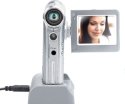 Samsung Miniket — Jan. 20, 2005 — A tiny, high-quality diskless camcorder that doubles as a digital camera, mp3 player, voice recorder, data storage device, and web cam. The Miniket runs a 2.6-series “ARM-no-MMU” uClinux kernel that can boot to a shell in 80msec.
Samsung Miniket — Jan. 20, 2005 — A tiny, high-quality diskless camcorder that doubles as a digital camera, mp3 player, voice recorder, data storage device, and web cam. The Miniket runs a 2.6-series “ARM-no-MMU” uClinux kernel that can boot to a shell in 80msec.
 Softier Wave 300 IPTV STB — Jan. 12, 2005 — An IP-STB (Internet protocol set-top box) that runs embedded Linux on a single-core DSP (digital signal processor) chip, the Wave-300 features H.264 compression, and targets telecom operators wishing to offer IPTV, VoD (video-on-demand), live TV, and home gaming services.
Softier Wave 300 IPTV STB — Jan. 12, 2005 — An IP-STB (Internet protocol set-top box) that runs embedded Linux on a single-core DSP (digital signal processor) chip, the Wave-300 features H.264 compression, and targets telecom operators wishing to offer IPTV, VoD (video-on-demand), live TV, and home gaming services.
 Sonos Digital Music System — Jan. 6, 2005 — A Linux-based home music distribution system based on “secure peer-to-peer wireless mesh” networking technology. Sonos says its Digital Music System can route the same or different songs, sourced from any connected computer, to as many as 30 audio output devices simultaneously.
Sonos Digital Music System — Jan. 6, 2005 — A Linux-based home music distribution system based on “secure peer-to-peer wireless mesh” networking technology. Sonos says its Digital Music System can route the same or different songs, sourced from any connected computer, to as many as 30 audio output devices simultaneously.
 FIC Vasilli — Jan. 4, 2005 — A Linux-based portable media player (PMP) that includes a 3.6-inch color LCD screen and a 20GB hard drive, and can play multimedia content downloaded directly from PCs and PVRs (personal video recorders) in a number of formats.
FIC Vasilli — Jan. 4, 2005 — A Linux-based portable media player (PMP) that includes a 3.6-inch color LCD screen and a 20GB hard drive, and can play multimedia content downloaded directly from PCs and PVRs (personal video recorders) in a number of formats.
 Siemens Speedstream 8xxx — Nov. 23, 2004 — An all-in-one Linux-based device providing a range of home gateway and entertainment functions. It targets “triple play” (voice, data, video) network operators, who can choose from several processors and DSP types, depending on their application.
Siemens Speedstream 8xxx — Nov. 23, 2004 — An all-in-one Linux-based device providing a range of home gateway and entertainment functions. It targets “triple play” (voice, data, video) network operators, who can choose from several processors and DSP types, depending on their application.
 Equator Babelfish — Nov. 12, 2004 — A hardware/software reference design based on an SoC (system-on-chip) with both RISC-like and DSP-like instructions. The “Babelfish” platform runs Linux 2.6 on a BSP-15 SoC, and targets IP-STBs (set-top-boxes), PVRs (personal video recorders), and digital media adapters.
Equator Babelfish — Nov. 12, 2004 — A hardware/software reference design based on an SoC (system-on-chip) with both RISC-like and DSP-like instructions. The “Babelfish” platform runs Linux 2.6 on a BSP-15 SoC, and targets IP-STBs (set-top-boxes), PVRs (personal video recorders), and digital media adapters.
 Zupera mobile A/V player — Nov. 4, 2004 — Zupera Technology has used a 2.6-series embedded Linux kernel to build a handheld audio/visual player set for volume production in January, 2005. The 30GB “Zupera” will be available with a 5.7- or 7-inch LCD touchscreen display, along with software for playback of a variety of multimedia files.
Zupera mobile A/V player — Nov. 4, 2004 — Zupera Technology has used a 2.6-series embedded Linux kernel to build a handheld audio/visual player set for volume production in January, 2005. The 30GB “Zupera” will be available with a 5.7- or 7-inch LCD touchscreen display, along with software for playback of a variety of multimedia files.
 StreetFire Sound RBX1600 — Oct. 25, 2004 — The RBX1600 adds a network interface to inexpensive consumer audio CD jukeboxes from Sony. The device has enabled two MIT students to relaunch their believed-to-be-legal music sharing network, “Library Access to Music Project” (LAMP).
StreetFire Sound RBX1600 — Oct. 25, 2004 — The RBX1600 adds a network interface to inexpensive consumer audio CD jukeboxes from Sony. The device has enabled two MIT students to relaunch their believed-to-be-legal music sharing network, “Library Access to Music Project” (LAMP).
 iRiver PMP-120 and PMP-140 — Oct. 24, 2004 — The PMP-120 and PMP-140 models offer 20GB and 40GB hard drives, respectively, and 3.5-inch LCD screens supporting video playback in a number of formats. The hardware appears to be identical to iRiver's Windows CE-based “PMC” (portable media center) devices, which are delayed.
iRiver PMP-120 and PMP-140 — Oct. 24, 2004 — The PMP-120 and PMP-140 models offer 20GB and 40GB hard drives, respectively, and 3.5-inch LCD screens supporting video playback in a number of formats. The hardware appears to be identical to iRiver's Windows CE-based “PMC” (portable media center) devices, which are delayed.
 Shinco Medaillon — Oct. 14, 2004 — A French company that claims to be the world's largest manufacturer of portable DVD players has added a unique capability to its medallion-shaped portable MP3 players. New “Z2” models of Shinco's “Medaillon” (French spelling) line can be used as USB storage devices that boot PCs into embedded Linux.
Shinco Medaillon — Oct. 14, 2004 — A French company that claims to be the world's largest manufacturer of portable DVD players has added a unique capability to its medallion-shaped portable MP3 players. New “Z2” models of Shinco's “Medaillon” (French spelling) line can be used as USB storage devices that boot PCs into embedded Linux.
 Interact-TV Telly — Aug. 14, 2004 — You can get a free SDK with the Telly “home entertainment server,” but you won't need to use it to enjoy remote controlled broadband Internet, cable TV, satellite TV, digital audio and video entertainment, and digital home networking. Not to mention DVR, mp3 ripping/burning, jukebox, photo album slideshows, and more. Three configurations: $749 MC800 (
Interact-TV Telly — Aug. 14, 2004 — You can get a free SDK with the Telly “home entertainment server,” but you won't need to use it to enjoy remote controlled broadband Internet, cable TV, satellite TV, digital audio and video entertainment, and digital home networking. Not to mention DVR, mp3 ripping/burning, jukebox, photo album slideshows, and more. Three configurations: $749 MC800 (
 Veritouch iVue — Jun. 24, 2004 — Veritouch's iVue is a portable Linux-powered media player, video game player, and personal file storage device featuring multi-user support, biometric authentication, and pervasive security. Though it has yet to launch, the device has already drawn heated criticism and even ridicule from anti-DRM (digital rights management) quarters. However, the device's innovative and pervasive security features may also impress some digital rights advocates.
Veritouch iVue — Jun. 24, 2004 — Veritouch's iVue is a portable Linux-powered media player, video game player, and personal file storage device featuring multi-user support, biometric authentication, and pervasive security. Though it has yet to launch, the device has already drawn heated criticism and even ridicule from anti-DRM (digital rights management) quarters. However, the device's innovative and pervasive security features may also impress some digital rights advocates.
 X-Digital Systems FlikIt IP-STB — May. 24, 2004 — X-Digital Systems (XDS) has launched what is believed to be the first device to run Linux natively on a single-core digital signal processor (DSP). The FlikIt IP-STB (Internet protocol set-top box) runs Softier's “MediaLinux” on a Texas Instruments TMS320DM64x DSP. It targets corporate communications, and is available as a reference design or device.
X-Digital Systems FlikIt IP-STB — May. 24, 2004 — X-Digital Systems (XDS) has launched what is believed to be the first device to run Linux natively on a single-core digital signal processor (DSP). The FlikIt IP-STB (Internet protocol set-top box) runs Softier's “MediaLinux” on a Texas Instruments TMS320DM64x DSP. It targets corporate communications, and is available as a reference design or device.
 Araneo IP TV Platform — Apr. 29, 2004 — Araneo products include an external IP TV Platform based on an IBM PowerPC405 core in conjunction with IBM's STB03xxx and STB04xxx controllers. The Platform uses hardware to decode compressed media streams, with lip synchronization, that are delivered via a fast Ethernet connection. Additional features include PVR (personal video recorder) functions, Web browsing and email, and a full Java virtual machine.
Araneo IP TV Platform — Apr. 29, 2004 — Araneo products include an external IP TV Platform based on an IBM PowerPC405 core in conjunction with IBM's STB03xxx and STB04xxx controllers. The Platform uses hardware to decode compressed media streams, with lip synchronization, that are delivered via a fast Ethernet connection. Additional features include PVR (personal video recorder) functions, Web browsing and email, and a full Java virtual machine.
 i3 Micro Mood Box — Apr. 22, 2004 — This set-top box delivers IP-based live TV, VOD, PPV, music-on-demand, Internet browsing, email, and other interactive services to users' TVs. The device is part of i3's “Mood solution,” which includes set-top boxes, streaming servers (for IP TV and video-on-demand), and system management servers. The device is being
i3 Micro Mood Box — Apr. 22, 2004 — This set-top box delivers IP-based live TV, VOD, PPV, music-on-demand, Internet browsing, email, and other interactive services to users' TVs. The device is part of i3's “Mood solution,” which includes set-top boxes, streaming servers (for IP TV and video-on-demand), and system management servers. The device is being
 Ponto-i Linux jukebox — Apr. 13, 2004 — Rio de Janeiro, Brazil start-up Ponto-i has developed a modern, Linux based jukebox with a retro look reminiscent of the 50s. The “Digipop” jukebox runs a custom Linux distribution based on Debian, along with LinuxBIOS, and uses a mix of custom and commodity PC hardware.
Ponto-i Linux jukebox — Apr. 13, 2004 — Rio de Janeiro, Brazil start-up Ponto-i has developed a modern, Linux based jukebox with a retro look reminiscent of the 50s. The “Digipop” jukebox runs a custom Linux distribution based on Debian, along with LinuxBIOS, and uses a mix of custom and commodity PC hardware.
 Roku High Definition Media Player — Dec. 1, 2003 — Embedded Linux and an open, hacker-friendly architecture power the world's first high definition media player, the $499 Roku HD1000. The brainchild of ReplayTV inventor Anthony Wood, the device could touch off a cottage industry of third-party applications and media packs that work with its Linux-based OS and user-friendly media APIs. Out of the box, the HD1000 can stream MPEG and MPEG2, play music, loop JPEGs, and moreall at the same time. Roku is selling “Art Packs” of everything from museum-quality art to hot-rod cars as memory cards that work with the device. And, the company will release a C/C++ SDK for the HD1000 before 2004.
Roku High Definition Media Player — Dec. 1, 2003 — Embedded Linux and an open, hacker-friendly architecture power the world's first high definition media player, the $499 Roku HD1000. The brainchild of ReplayTV inventor Anthony Wood, the device could touch off a cottage industry of third-party applications and media packs that work with its Linux-based OS and user-friendly media APIs. Out of the box, the HD1000 can stream MPEG and MPEG2, play music, loop JPEGs, and moreall at the same time. Roku is selling “Art Packs” of everything from museum-quality art to hot-rod cars as memory cards that work with the device. And, the company will release a C/C++ SDK for the HD1000 before 2004.
 Amino AmiNet100 — Nov. 13, 2003 — UK-based Internet protocol (IP) set-top-box (STB) maker Amino's AmiNet100 is barely larger than its own remote control. It uses Espial software to provide an “HTML-on-TV” experience.
Amino AmiNet100 — Nov. 13, 2003 — UK-based Internet protocol (IP) set-top-box (STB) maker Amino's AmiNet100 is barely larger than its own remote control. It uses Espial software to provide an “HTML-on-TV” experience.
 Amino AmiNet110 — Nov. 13, 2003 — The AmiNet110 resembles the AmiNet100, but adds a number of new interfaces. Amino markets its STBs to IPTV and video-on-demand (VOD) broadcasters around the world. As part of an elder-care program, it
Amino AmiNet110 — Nov. 13, 2003 — The AmiNet110 resembles the AmiNet100, but adds a number of new interfaces. Amino markets its STBs to IPTV and video-on-demand (VOD) broadcasters around the world. As part of an elder-care program, it
 Dream-Multimedia-Tv's “Dreambox” — Oct. 9, 2003 — This $395 Linux-based digital radio and DVB satellite (or cable) receiver offers DVR functions and PC connectivity. A minimalistic, GPL'd Linux-based software implementation has made the DM7000 popular with Linux programmers and TV device hackers. The device's open-source nature has resulted in availability of dozens of plugins, from various conditional access (CA) modules to games and installation helpers.
Dream-Multimedia-Tv's “Dreambox” — Oct. 9, 2003 — This $395 Linux-based digital radio and DVB satellite (or cable) receiver offers DVR functions and PC connectivity. A minimalistic, GPL'd Linux-based software implementation has made the DM7000 popular with Linux programmers and TV device hackers. The device's open-source nature has resulted in availability of dozens of plugins, from various conditional access (CA) modules to games and installation helpers.
 Hauppauge's MediaMVP — Oct. 6, 2003 — This $99 “digital media receiver” is a low cost thin-client device that connects a home PC running Win XP Home, XP Pro, or W2K with home TV and A/V equipment. The MediaMVP can decode mp3s, MPEG-1 and MPEG-2 videos, JPEGs, GIFs and other content for display on TV sets, TV monitors, plasma monitors, or home theater A/V systems, according to Hauppauge. It can be combined with a personal video recorder (PVR) solution such as a Hauppauge WinTV-PVR card for a complete PVR solution.
Hauppauge's MediaMVP — Oct. 6, 2003 — This $99 “digital media receiver” is a low cost thin-client device that connects a home PC running Win XP Home, XP Pro, or W2K with home TV and A/V equipment. The MediaMVP can decode mp3s, MPEG-1 and MPEG-2 videos, JPEGs, GIFs and other content for display on TV sets, TV monitors, plasma monitors, or home theater A/V systems, according to Hauppauge. It can be combined with a personal video recorder (PVR) solution such as a Hauppauge WinTV-PVR card for a complete PVR solution.
 Galaxis LinuxTV C — Sep. 25, 2003 — An inexpensive STB for satellite reception powered by NEC's EMMA2 STB SoC and Convergence's LinuxTV 2.0 software stack, the LinuxTV C networks with PCs via USB, Ethernet, or Firewire, and supports recording of digital TV on external or internal hard drive (not included). The box will also serve as an DSL router and radio.
Galaxis LinuxTV C — Sep. 25, 2003 — An inexpensive STB for satellite reception powered by NEC's EMMA2 STB SoC and Convergence's LinuxTV 2.0 software stack, the LinuxTV C networks with PCs via USB, Ethernet, or Firewire, and supports recording of digital TV on external or internal hard drive (not included). The box will also serve as an DSL router and radio.
 Video Without Boundaries MediaReady 4000 and 5000 — Sep. 19, 2003 — VWB's MediaReady 4000 device, expected Q4, 2003 and already licensed by Lafayette Electronics, is a convergent device based on embedded Linux which unifies feature-rich TV, Internet, email, karaoke, MP3/CD/DVD/MPEG-1/MPEG-2/MPEG-4 playback, and local and networked digital storage. It is based on the MediaReady Convergent Software Suite, which the companies say integrates consumer electronics chip-based media functionality with PC motherboard technology.
Video Without Boundaries MediaReady 4000 and 5000 — Sep. 19, 2003 — VWB's MediaReady 4000 device, expected Q4, 2003 and already licensed by Lafayette Electronics, is a convergent device based on embedded Linux which unifies feature-rich TV, Internet, email, karaoke, MP3/CD/DVD/MPEG-1/MPEG-2/MPEG-4 playback, and local and networked digital storage. It is based on the MediaReady Convergent Software Suite, which the companies say integrates consumer electronics chip-based media functionality with PC motherboard technology.
 Envivio STiNO s-box 4000 STB — Sep. 18, 2003 — This device features a VIA C3 800 MHz CPU in combination with Sigma's MPEG-4 decoder chip solution. It integrates Envivio's MPEG-4 player and is driven by TUXIA's Linux-based iTV Middleware “TUXIA Appliance Synthesis Technology” (TASTE) 3.6. STiNO says the s-box 4000 contains optimized hardware for high-performance MPEG-4 streaming and web browsing. Because of its open hardware and software platform, it can now also support DVB-S and DVB-T applications.
Envivio STiNO s-box 4000 STB — Sep. 18, 2003 — This device features a VIA C3 800 MHz CPU in combination with Sigma's MPEG-4 decoder chip solution. It integrates Envivio's MPEG-4 player and is driven by TUXIA's Linux-based iTV Middleware “TUXIA Appliance Synthesis Technology” (TASTE) 3.6. STiNO says the s-box 4000 contains optimized hardware for high-performance MPEG-4 streaming and web browsing. Because of its open hardware and software platform, it can now also support DVB-S and DVB-T applications.
 Matsushita/Panasonic Broadnow set-top box — Apr. 15, 2003 — This broadband-connected TV tuner and PVR plays video, music, and other content over broadband networks such as fiber-to-the-home (FTTH) and ADSL. The unit features some interesting capabilities, such as remotely controlling video recording via email.
Matsushita/Panasonic Broadnow set-top box — Apr. 15, 2003 — This broadband-connected TV tuner and PVR plays video, music, and other content over broadband networks such as fiber-to-the-home (FTTH) and ADSL. The unit features some interesting capabilities, such as remotely controlling video recording via email.
 Royal Philips iPronto — Apr. 15, 2003 — This cool gadget combines audio/video, home automation, and home network control capabilities, and can be used to control home theater components, lighting, security cameras, home networks, climate control, and, well, pretty much any other system or device in your home via its IR/RF/Ethernet wired and wireless communications (802.11b).
Royal Philips iPronto — Apr. 15, 2003 — This cool gadget combines audio/video, home automation, and home network control capabilities, and can be used to control home theater components, lighting, security cameras, home networks, climate control, and, well, pretty much any other system or device in your home via its IR/RF/Ethernet wired and wireless communications (802.11b).
 PRISMIQ MediaPlayer — Mar. 18, 2003 — This “networked entertainment gateway” connects via normal audio/video cables to the user's TV and stereo systems, and also communicates with the home network or PC via wired Ethernet or wireless 802.11b (Wi-Fi). It plays audio and video media files and provides TV-based web surfing, instant messaging, and more.
PRISMIQ MediaPlayer — Mar. 18, 2003 — This “networked entertainment gateway” connects via normal audio/video cables to the user's TV and stereo systems, and also communicates with the home network or PC via wired Ethernet or wireless 802.11b (Wi-Fi). It plays audio and video media files and provides TV-based web surfing, instant messaging, and more.
 Terapin Mine — Dec. 9, 2002 — This handheld, Internet-enabled, personal data storage and record/playback device is based on an embedded PowerPC processor. A built-in 10 GB HDD holds thousands of digital photographs/audio tracks or can be used as a temporary storage or for carrying data from here to there.
Terapin Mine — Dec. 9, 2002 — This handheld, Internet-enabled, personal data storage and record/playback device is based on an embedded PowerPC processor. A built-in 10 GB HDD holds thousands of digital photographs/audio tracks or can be used as a temporary storage or for carrying data from here to there.
 NEC AX10 audio/video server — Nov. 20, 2002 — This unique “TV in a PC” is a disk-based recorder for audio-visual applications. It lets consumers view, listen, edit, and save TV programs onto a hard disk or videotape.
NEC AX10 audio/video server — Nov. 20, 2002 — This unique “TV in a PC” is a disk-based recorder for audio-visual applications. It lets consumers view, listen, edit, and save TV programs onto a hard disk or videotape.
 Advanced CommunicationsMPEG-4 set-top box — Nov. 6, 2002 — The ECCLE5000 features an MPEG decoder that enables home TVs to replay MPEG-1/2/4 high quality video streams distributed via the Internet or cable.
Advanced CommunicationsMPEG-4 set-top box — Nov. 6, 2002 — The ECCLE5000 features an MPEG decoder that enables home TVs to replay MPEG-1/2/4 high quality video streams distributed via the Internet or cable.
 Sony CoCoon PVR — Nov. 6, 2002 — This Internet-connected personal video recorder (PVR) is reportedly based on a 350MHz MIPS processor, and it has an internal 160GB hard drive that provides 100 hours of programming (expandable to 320GB).
Sony CoCoon PVR — Nov. 6, 2002 — This Internet-connected personal video recorder (PVR) is reportedly based on a 350MHz MIPS processor, and it has an internal 160GB hard drive that provides 100 hours of programming (expandable to 320GB).
 Amino AmiNet500 — Aug. 31, 2002 — Amino Communications expects to ship in October a tiny IP-STB (Internet-protocol set-top box) with built-in PVR (personal video recorder) capabilities. The AmiNet500 runs embedded Linux, and can record 40 hours of content. It targets telco's with IP-TV services.
Amino AmiNet500 — Aug. 31, 2002 — Amino Communications expects to ship in October a tiny IP-STB (Internet-protocol set-top box) with built-in PVR (personal video recorder) capabilities. The AmiNet500 runs embedded Linux, and can record 40 hours of content. It targets telco's with IP-TV services.
 SONICblue Rio Central — May. 10, 2002 — This high-fidelity home stereo component that stores up to 650 CDs worth of music on its built-in 40GB hard drive is said to be “as simple to use as a CD player, but as smart as a PC”a Linux-based PC, that is! Inside, there's a 206MHz Intel StrongARM processor along with 16MB of system RAM running an Embedded Linux OS derived from Debian/ARM sources.
SONICblue Rio Central — May. 10, 2002 — This high-fidelity home stereo component that stores up to 650 CDs worth of music on its built-in 40GB hard drive is said to be “as simple to use as a CD player, but as smart as a PC”a Linux-based PC, that is! Inside, there's a 206MHz Intel StrongARM processor along with 16MB of system RAM running an Embedded Linux OS derived from Debian/ARM sources.
 VT Media set-top box — Apr. 8, 2002 — The highly compact Linux-based VT100 set-top box enables several data streams, including Ethernet 10/100, to be converted to composite analog RF data streams or digital S-Video data streams compatible with all standard TV sets.
VT Media set-top box — Apr. 8, 2002 — The highly compact Linux-based VT100 set-top box enables several data streams, including Ethernet 10/100, to be converted to composite analog RF data streams or digital S-Video data streams compatible with all standard TV sets.
 ZapMedia ZapStation — Mar. 22, 2002 — ZapMedia's first product is a Linux-powered audio/video jukebox for serious consumer audiophiles. Beneath that stereo receiver look-and-feel lurks an 800MHz Intel Celeron equipped with 128MB RAM and a 30GB hard drive, running Linux kernel 2.4. The GUI is based on XFree86, Qt, Java, and a customized Fresco Browser.
ZapMedia ZapStation — Mar. 22, 2002 — ZapMedia's first product is a Linux-powered audio/video jukebox for serious consumer audiophiles. Beneath that stereo receiver look-and-feel lurks an 800MHz Intel Celeron equipped with 128MB RAM and a 30GB hard drive, running Linux kernel 2.4. The GUI is based on XFree86, Qt, Java, and a customized Fresco Browser.
 EnReach media center — Feb. 25, 2002 — The EMC-300 set-top broadband media center enables digital video recording (DVR), video-on-demand (VOD), and television over IP (IP-TV). The device can also serve as a home media server for in-house or peer-to-peer file and audio/video sharing, and it also includes web browsing and email capabilities.
EnReach media center — Feb. 25, 2002 — The EMC-300 set-top broadband media center enables digital video recording (DVR), video-on-demand (VOD), and television over IP (IP-TV). The device can also serve as a home media server for in-house or peer-to-peer file and audio/video sharing, and it also includes web browsing and email capabilities.
 Bokks portable media-player — Nov. 28, 2001 — This versatile device connects to a broadband network via DSL, cable, or optical fiber and plugs into a TV to allow email and Internet access. It store movies, music, and other files on its internal multi-Gigabyte hard drive, allowing them to be listened to or viewed whenever the user is near a TV, stereo, or computer. Based on a 266MHz NSC SC1200 system-on-chip processor running Linux kernel 2.4.x.
Bokks portable media-player — Nov. 28, 2001 — This versatile device connects to a broadband network via DSL, cable, or optical fiber and plugs into a TV to allow email and Internet access. It store movies, music, and other files on its internal multi-Gigabyte hard drive, allowing them to be listened to or viewed whenever the user is near a TV, stereo, or computer. Based on a 266MHz NSC SC1200 system-on-chip processor running Linux kernel 2.4.x.
 JCC iBOX-2 — Sep. 7, 2001 — Japan Computer Corporation (JCC) has developed a new Internet appliance based on National's Geode “set-top box on a chip running an Embedded Linux operating system. The device contains 16-32MB DRAM and an 8MB DiskOnChip flash disk, and has a built-in Ethernet port.
JCC iBOX-2 — Sep. 7, 2001 — Japan Computer Corporation (JCC) has developed a new Internet appliance based on National's Geode “set-top box on a chip running an Embedded Linux operating system. The device contains 16-32MB DRAM and an 8MB DiskOnChip flash disk, and has a built-in Ethernet port.
 Motorola DCT5000 set-top box — Aug. 29, 2001 — This interactive digital multimedia set-top appliance from Motorola's broadband communications division includes capabilities for personal video recording, streaming media, and home networking.
Motorola DCT5000 set-top box — Aug. 29, 2001 — This interactive digital multimedia set-top appliance from Motorola's broadband communications division includes capabilities for personal video recording, streaming media, and home networking.
 HP Digital Entertainment Center — Jun. 20, 2001 — HP's first product in the consumer entertainment device space has Linux 2.4 and the X Window system inside. Its embedded computer is based on a 566 MHz Celeron, with 64MB RAM and a 40GB hard disk, and its interfaces include USB, Ethernet, HPNA, a built-in V.90 modem, stereo audio, and video out for display on a TV. The device can download and record music and videos from the Internet, and can read and copy music CDs onto its internal hard drive.
HP Digital Entertainment Center — Jun. 20, 2001 — HP's first product in the consumer entertainment device space has Linux 2.4 and the X Window system inside. Its embedded computer is based on a 566 MHz Celeron, with 64MB RAM and a 40GB hard disk, and its interfaces include USB, Ethernet, HPNA, a built-in V.90 modem, stereo audio, and video out for display on a TV. The device can download and record music and videos from the Internet, and can read and copy music CDs onto its internal hard drive.
 Hi-Muse music appliance — May. 22, 2001 — This Linux-based device can record, play, and store music from CDs and other sources and provides a simple means to locate, listen to, and store music from Internet radio stations, music portals, and other online sources. Initial prototypes use a Pentium or Celeron x86 CPU, but the design is being revised to make use of Cirrus and TI dual-core (ARM + DSP) system-on-chip processors. The OS is based on a standard Linux kernel with the addition of real-time audio enhancements.
Hi-Muse music appliance — May. 22, 2001 — This Linux-based device can record, play, and store music from CDs and other sources and provides a simple means to locate, listen to, and store music from Internet radio stations, music portals, and other online sources. Initial prototypes use a Pentium or Celeron x86 CPU, but the design is being revised to make use of Cirrus and TI dual-core (ARM + DSP) system-on-chip processors. The OS is based on a standard Linux kernel with the addition of real-time audio enhancements.
 Kerbango (3Com) Internet Radio — Mar. 21, 2001 — The Kerbango Internet Radio (Kerbango was acquired by 3Com) connects to the internet via a phone line, Ethernet, or a USB-connected networking interface. Its internal embedded computer is based on an 80 MHz Motorola PowerPC system-on-chip processor along with 8MB of RAM and 8MB of flash storage memory. The Embedded Linux operating system includes a unique “Kerbango Audio Operating System” (KAOS) which provides easy-to-use features for user interface, network setup, etc. In addition to “receiving” radio stations via the Internet connection, the device also contains a conventional FM radio receiver and built-in FM antenna. Note: This interesting product, which created a lot of interest due to its retro appearance and appealing capabilities, never made it into the market. Although preproduction units were built, they were never sold to the public.
Kerbango (3Com) Internet Radio — Mar. 21, 2001 — The Kerbango Internet Radio (Kerbango was acquired by 3Com) connects to the internet via a phone line, Ethernet, or a USB-connected networking interface. Its internal embedded computer is based on an 80 MHz Motorola PowerPC system-on-chip processor along with 8MB of RAM and 8MB of flash storage memory. The Embedded Linux operating system includes a unique “Kerbango Audio Operating System” (KAOS) which provides easy-to-use features for user interface, network setup, etc. In addition to “receiving” radio stations via the Internet connection, the device also contains a conventional FM radio receiver and built-in FM antenna. Note: This interesting product, which created a lot of interest due to its retro appearance and appealing capabilities, never made it into the market. Although preproduction units were built, they were never sold to the public.
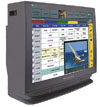 Sylvania Internet/TV — Mar. 8, 2001 — This new TV set from Sylvania Computer Products represents the first in a new consumer product category: the “Internet/TV”. It's got a built-in Internet appliance, provides an SVGA-resolution display (800 x 600), and has interface connectors for video, audio, phone line, and Ethernet. Who knowsmaybe this Internet/TV is just the ticket for Internet access by the “other half” of all Americans who don't own a PC?
Sylvania Internet/TV — Mar. 8, 2001 — This new TV set from Sylvania Computer Products represents the first in a new consumer product category: the “Internet/TV”. It's got a built-in Internet appliance, provides an SVGA-resolution display (800 x 600), and has interface connectors for video, audio, phone line, and Ethernet. Who knowsmaybe this Internet/TV is just the ticket for Internet access by the “other half” of all Americans who don't own a PC?
 PhatNoise PhatBox — Nov. 1, 2000 — The PhatBox car audio system, which won “best overall product” at the Third Annual MP3 Summit, gives consumers the capability to take MP3 music files from their PC and listen to them in the sound system of their car. Its embedded computer is based on a 74MHz Cirrus Logic EP7212 system-on-chip processor, running Embedded Linux.
PhatNoise PhatBox — Nov. 1, 2000 — The PhatBox car audio system, which won “best overall product” at the Third Annual MP3 Summit, gives consumers the capability to take MP3 music files from their PC and listen to them in the sound system of their car. Its embedded computer is based on a 74MHz Cirrus Logic EP7212 system-on-chip processor, running Embedded Linux.
 empeg car audio player — Oct. 24, 2000 — This consumer audio device is an in-dash digital music player with a capacity of up to 600 hours of high quality music. It connects to a PC (to receive downloaded MP3 files) via USB, Ethernet, or a serial port, and stores music files on a pair of internal laptop-style hard drives. Inside, embedded Linux runs on a 220 MHz Intel StrongARM system-on-chip processor with 12MB RAM and 1MB flash (for bootstrap). There is an option to add an FM tuner.
empeg car audio player — Oct. 24, 2000 — This consumer audio device is an in-dash digital music player with a capacity of up to 600 hours of high quality music. It connects to a PC (to receive downloaded MP3 files) via USB, Ethernet, or a serial port, and stores music files on a pair of internal laptop-style hard drives. Inside, embedded Linux runs on a 220 MHz Intel StrongARM system-on-chip processor with 12MB RAM and 1MB flash (for bootstrap). There is an option to add an FM tuner.
 Nokia Media Terminal — Oct. 19, 2000 — This device adds a broad range of Internet-based services to a normal TV set. Among the services available are digital audio/video, digital TV, video-on-demand, cached TV programs, web access, email and chatting, games/gaming, and many web-based software applications. The Media Terminal's internal software is based on Linux, the Mozilla open source browser, X Window System, plus a unique user-interface technology called “Nokia Navi bars”. The embedded computer is a 366 MHz Intel Celeron CPU along with the Intel 810 chipset, plus 32MB SDRAM and a minimum 20GB hard disk.
Nokia Media Terminal — Oct. 19, 2000 — This device adds a broad range of Internet-based services to a normal TV set. Among the services available are digital audio/video, digital TV, video-on-demand, cached TV programs, web access, email and chatting, games/gaming, and many web-based software applications. The Media Terminal's internal software is based on Linux, the Mozilla open source browser, X Window System, plus a unique user-interface technology called “Nokia Navi bars”. The embedded computer is a 366 MHz Intel Celeron CPU along with the Intel 810 chipset, plus 32MB SDRAM and a minimum 20GB hard disk.
 TiVO Personal TV — Jun. 12, 2000 — The TiVO “personal video recorder” represents what may well be the most well known Embedded Linux system in existence. It's also one of the first consumer appliances to make use of Embedded Linux. The device is based on a 54 MHz PowerPC 403GCX processor with 16MB of RAM, plus a large capacity hard disk for up to 30 hours of TV program storage. Surprisingly, video is not generated in a computer-like manner but is instead based on a graphics rendering chip. Hence, the device contains a home-grown port of Embedded Linux, but neither uses nor requires either a windowing system or a GUI framework.
TiVO Personal TV — Jun. 12, 2000 — The TiVO “personal video recorder” represents what may well be the most well known Embedded Linux system in existence. It's also one of the first consumer appliances to make use of Embedded Linux. The device is based on a 54 MHz PowerPC 403GCX processor with 16MB of RAM, plus a large capacity hard disk for up to 30 hours of TV program storage. Surprisingly, video is not generated in a computer-like manner but is instead based on a graphics rendering chip. Hence, the device contains a home-grown port of Embedded Linux, but neither uses nor requires either a windowing system or a GUI framework.
 Indrema Entertainment System — Jun. 6, 2000 — The Indrema Entertainment System (IES) is a set-top device that converts a TV into a high-end gaming system. The device is packaged in a sleek enclosure with the look and feel of a top-of-the-line VCR. It offers a choice of dialup or broadband Internet access (it has a built-in 10/100 mb Ethernet controller), and comes with a game controller. The embedded computer is based on a high-end x86 processor, plus 64MB RAM and up to a 50 GB hard disk. High speed graphics is generated by means of an upgradeable plug-in module, which initially uses an an NVIDIA GPU. The embedded operating system is DV Linux, an open source Linux port targeted to gaming systems. Note: this interesting device generated a lot of excitement in the developer and gamer communities, but unfortunately never made it into production.
Indrema Entertainment System — Jun. 6, 2000 — The Indrema Entertainment System (IES) is a set-top device that converts a TV into a high-end gaming system. The device is packaged in a sleek enclosure with the look and feel of a top-of-the-line VCR. It offers a choice of dialup or broadband Internet access (it has a built-in 10/100 mb Ethernet controller), and comes with a game controller. The embedded computer is based on a high-end x86 processor, plus 64MB RAM and up to a 50 GB hard disk. High speed graphics is generated by means of an upgradeable plug-in module, which initially uses an an NVIDIA GPU. The embedded operating system is DV Linux, an open source Linux port targeted to gaming systems. Note: this interesting device generated a lot of excitement in the developer and gamer communities, but unfortunately never made it into production.
This article was originally published on LinuxDevices.com and has been donated to the open source community by QuinStreet Inc. Please visit LinuxToday.com for up-to-date news and articles about Linux and open source.